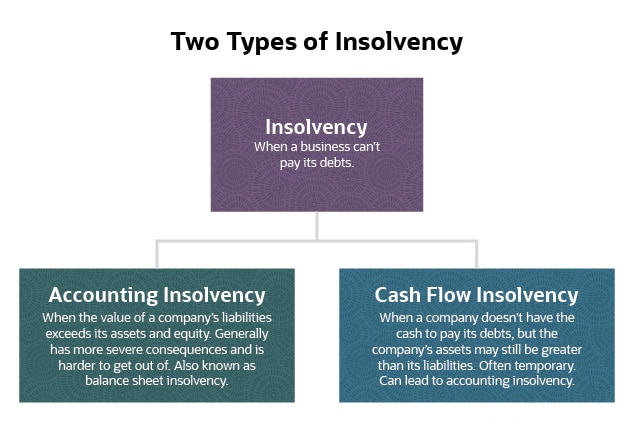All About Insolvency Practitioner
All About Insolvency Practitioner
Blog Article
The Ultimate Guide To Insolvency Practitioner
Table of ContentsInsolvency Practitioner for DummiesGetting My Insolvency Practitioner To WorkInsolvency Practitioner Things To Know Before You BuyIndicators on Insolvency Practitioner You Should KnowSee This Report about Insolvency PractitionerWhat Does Insolvency Practitioner Do?The Basic Principles Of Insolvency Practitioner
Insurance coverage is checked and regulated by state insurance departments, and among their main goals is safeguarding policyholders from the risk of a firm in economic distress. When a company goes into a duration of monetary problem and is not able to satisfy its obligations, the insurance policy commissioner in the firm's home state initiates a processdictated by the regulations of the statewhereby initiatives are made to help the business reclaim its financial footing.If it is established that the business can not be rehabilitated, the company is proclaimed bankrupt, and the commissioner will ask the state court to get the liquidation of the firm. [Back] The insurance coverage commissioner, either appointed by the governor or chosen, heads the state insurance division and screens and controls insurance activity within the state.
[Back] By acquiring control of a company, the commissioner (or the insurance policy division) is, by legislation, the rehabilitator or liquidator of the company. In this capability, the commissioner or department takes control of the business's operations. Instead of do so straight, the commissioner might keep a special deputy receiver to manage the company's activities - Insolvency Practitioner.
Things about Insolvency Practitioner
The receiver looks after an audit of the business's possessions and responsibilities and carries out the estate of the business. In doing so, the receiver looks for to optimize the company's properties, transfer them to cash, and afterwards distribute that cash to financial institutions having valid insurance claims against the insurance provider in conformity with repayment concerns specified by state legislation (in all states, insurance policy holders are priority claimants whose cases are paid before those of general financial institutions).
All insurance provider (with restricted exceptions) accredited to market life or medical insurance or annuities in a state have to be participants of that state's guaranty association. The warranty association accepts the commissioner and the receiver in pre-liquidation planning. As soon as the liquidation is bought, the warranty association supplies protection to the business's insurance policy holders that are state residents (as much as the degrees defined by state lawssee listed below; any type of benefit amounts over the guaranty asociation benefit degrees become insurance claims against the company's continuing to be properties).
The Basic Principles Of Insolvency Practitioner
The above protection degrees apply individually for each financially troubled insurance firm. When an insurance provider falls short and there is a shortfall of funds required to satisfy the view responsibilities to insurance policy holders, state warranty associations are turned on. Guaranty associations have subrogation blog here rights to an in proportion share of the properties continuing to be in the fallen short insurance company.
Second, insurers doing organization in that state are analyzed a share of the quantity called for to meet the part of the warranty organizations' protected claims not otherwise moneyed with estate assets. The quantity insurance providers are evaluated is based on the amount of costs that they gather in that state. The National Organization of Life and Wellness Insurance Coverage Guaranty Organizations (NOLHGA) is made up of the life and health insurance policy guaranty organizations of all 50 states and the District of Columbia.
NOLHGA develops a job force of use this link depictive warranty organizations to function with the insurance coverage commissioner to create a plan to safeguard insurance policy holders.
Top Guidelines Of Insolvency Practitioner

Anticipating defense by helping you pick the ideal customers and the ideal markets to stay clear of uncollectable loan to begin with, thanks to intense monetary analysis. In-depth market knowledge, providing you with 360-degree exposure on company fields and putting in jeopardy problems. It would be a simplification to assume a profession credit scores insurance coverage begins and ends with costs and pay-outs.

The 10-Minute Rule for Insolvency Practitioner
Why does a business get in into bankruptcy? There are a number of factors why a business might enter right into insolvency.
Other reasons for insolvency consist of fraud, mismanagement, and unanticipated costs. Insolvency can likewise lead to job losses and the closure of services.
Some Known Questions About Insolvency Practitioner.
The firm may be required to market assets, lay off team or also close down. Lenders may be left out of pocket and the firm's investors may see their investment vanish.
This can happen for a variety of factors, including poor financial management, unforeseen expenses, or a modification in the marketplace. If a firm is bankrupt, it may be forced to fold or liquidate assets to pay financial institutions. This can have a major influence on business, workers, and investors.
Why does a company get in into insolvency? There are a number of factors why a company may get in into insolvency.
An Unbiased View of Insolvency Practitioner
Other factors for insolvency include scams, mismanagement, and unexpected costs. Insolvency can likewise lead to work losses and the closure of businesses.
This can have significant ramifications for the company, its stakeholders, financial institutions and the economy. The business may be forced to offer possessions, gave up team and even fold. This can have a knock-on impact on the regional community and the economy as a whole. Financial institutions may be neglected of pocket and the company's shareholders might see their investment disappear.
Report this page